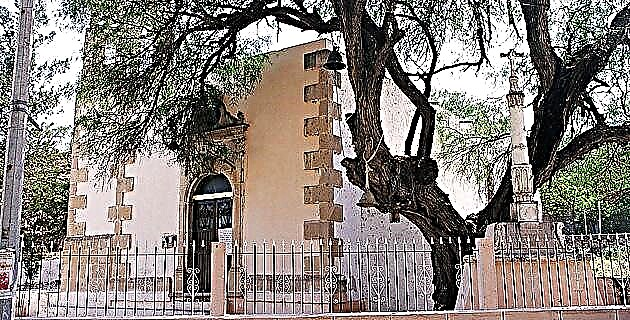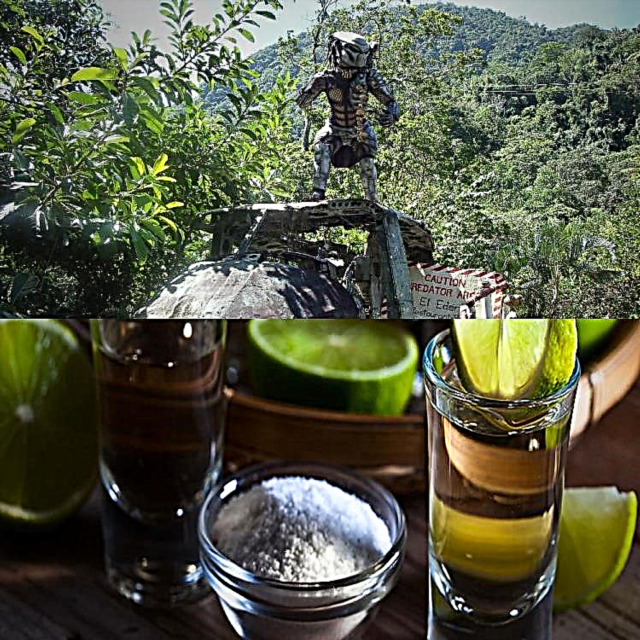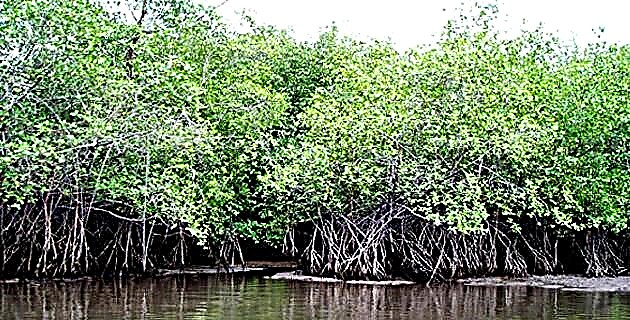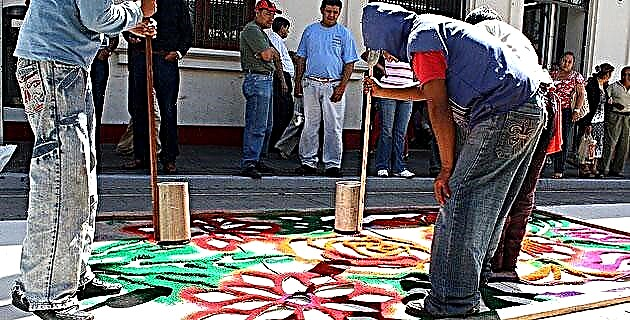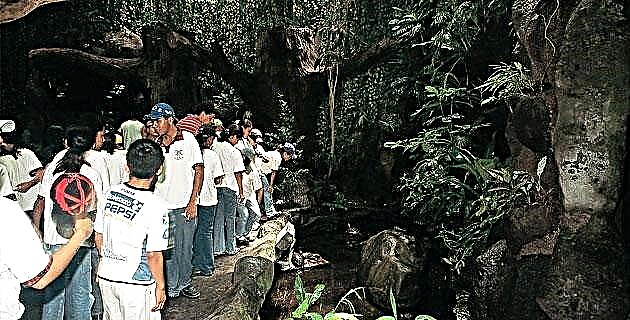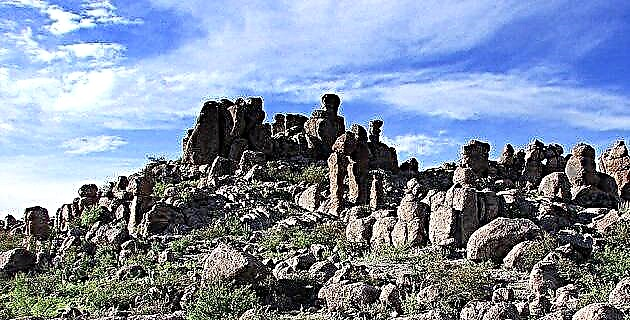
The Chihuahuan Desert is home to countless secrets: unfathomable horizons, deep chasms, ghostly rivers and a flora that annihilates the apparent monotony with bold detonations of color.
It also protects one of the very few places in the world that defy the limits of human imagination: Polvorillas, or as the people there say, “place of the stones on top”.
Walking between these stones means entering a labyrinth where space is altered and time passes between fleeting hours, relaxed minutes, and eternal moments. One is aware of the elements of form: the earth that moves, the water that drains, the air that beats down, and the heat of an untiring sun come together with the cold of the night over the millennia, and together they sculpt the circle, the square, the triangle, the face of a woman, a couple fused in a mineral kiss, a naked from the back. Truly, in this place the trace of the divine was captured: elusive, impalpable, indecipherable.
The expression of the rocks tells the history of our land, like the wrinkled face of an old man attests to his life. If they could speak to us, a word from them would last a decade; a phrase, a century. And if we were able to understand them, what would they tell us about? Perhaps they would tell us a legend told by their great-grandparents 87 million years ago ...
In the library of his home in the city of Chihuahua, the geologist Carlos García Gutiérrez, an expert translator of the language of stones and a compiler of their history, explains that during the Upper Cretaceous the Farallón plate began to penetrate below the American continent, raising the immense sea that went from Canada to the center of our country. The Jurassic period saw the beginning of a process of subduction in which heavier stone masses got under the lighter stones. (Because of its weight, the basalt stone is found at the bottom of the sea and is introduced below the rhyolitic stone, which is lighter and forms the body of the continents.) These collisions changed the physiognomy of the planet, creating towering mountains like the Andes and the Himalayas, and produced earthquakes and volcanic eruptions.
In Chihuahua, ninety million years ago, the encounter between the Farallón plate and our continent forced the so-called Mexican Sea to retreat towards the Gulf of Mexico, a process that would last several million years. Today, the only memory we have of that sea is the Rio Grande basin and the fossil remains of maritime life: beautiful ammonites, primordial oysters and fragments of petrified coral.
These tectonic movements gave rise to a period of intense volcanic activity that extended from the south to what is today the Rio Grande. Huge boilers up to twenty kilometers in diameter let out the energy produced by the collision of the plates, and the incandescent stone found its way out through fissures in the earth's crust. The calderas had an average life of a million years, and when they died they left large hills around them, known as ring dikes because they surrounded the craters like rings and prevented them from spreading. In Mexico, the temperature of the molten stone was relatively low, reaching only 700 degrees Celsius and not the 1,000 that are recorded in the volcanoes of Hawaii. This gave a less fluid and much more explosive character to Mexican volcanism, and frequent detonations threw large amounts of ash into the atmosphere. As it descended back to the earth's surface, the ash accumulated in strata and over time it hardened and compacted. When the calderas were finally extinguished and volcanic activity subsided 22 million years ago, the tuff layers solidified.
But the earth never rests. The new tectonic movements, already less violent, fractured the tuffs from north to south, and due to the granular nature of the rock, chains of square blocks were formed. The blocks were overlapping because the tuffs had formed in layers. The rains, more abundant at that time, affected the most vulnerable part of the blocks, that is, their sharp edges, and rounded them with their insistent patter. In the language of stones, interpreted by man, such a process has the name of spherical weathering.
These geological transformations have determined fundamental aspects of our daily lives. For example, volcanic activity wiped out all the oil deposits south of the Rio Grande, and only the abundant deposits in Texas survived. At the same time, rich lead and zinc veins were concentrated in Chihuahua, which do not exist on the other side of the Rio Grande basin.
The necromancy of the stones reveals an unimaginable future. 12 million years ago the expansion of the Rio Grande basin began. Every year Ojinaga moves a few millimeters away from the river. At this rate, within 100 million years a large part of the Chihuahuan Desert will once again be sea, and all the border cities, or their vestiges, will be submerged. Man will have to build ports to transport the goods of the future. By then it is likely that the stones of Polvorillas that still remain, guard extensive beaches.
Today, the unusual formations spread throughout the area and it is necessary to patiently explore them to find the most impressive concentrations. Its magic is revealed in full force at dawn, dusk, and moonlight, when the rocks acquire an unusual eloquence. Sometimes you feel like you are on the axle of a wheel whose spokes were runners, reflecting the history of its geological formation. Walking in the midst of this silence, one never feels alone.
Polvorillas lies at the foot of the Sierra del Virulento, in the municipality of Ojinaga. Traveling from Camargo to Ojinaga, about forty miles from La Perla, cut a dirt road to the right. The gap crosses El Virulento and, after a 45-kilometer journey, you reach a nucleus of houses, near a primary school. The few inhabitants there are dedicated to cattle ranching and the production of ranchero cheese from both goats and cows (see Unknown Mexico No. 268). Although there are some children who play among the stones, most of the inhabitants are older people because the young people go to urban centers first to study high school and then to find work in the maquiladoras.
There are several dirt roads that connect this area with the Santa Elena Canyon Reserve. Desert adventurers can trace their route with the help of a good INEGI map and with the directions of the inhabitants of the area. Four-wheel drive vehicles are necessary, but the furniture must be more or less high and the driver must not be in a hurry, so that he can adapt to the adventures of the board. Water is essential - the human being can last more than a week without eating, but dies after two or three days without water - and it stays fresher when it is put to calm at night and is wrapped with blankets for the travel. Gasoline purchased on the side of the road or in population centers is expensive, but it is advisable to enter the region with a full tank if you plan to take a long trip. Chewing gum is good for sealing a small hole in the gas tank, and good spare tires and a hand pump are a good idea to pack. It is advisable to visit these areas in spring, autumn or winter, because the summer heats are very strong. Finally, when it comes to having problems, the villagers are very supportive, since they understand that mutual help is what makes life in the desert possible.
Due to the extension and uniqueness of the stones, this place is an important heritage, worthy of respect and great care. Regarding tourism development, Polvorillas shares the same problems as several places in the Chihuahuan Desert: poor infrastructure, water scarcity and lack of interest in developing suitable systems for the desert environment and shared projects in the ejidos. In 1998 a tourist project was proposed, but to date everything has remained in two bilingual signs on the side of the road announcing the Piedras Encimadas; the isolation and lack of hotel facilities have not favored the massive arrival of visitors, which can be positive for the conservation of the place.
The desert is a harsh environment, but people who have learned to change the comforts of conventional tourism for a more rustic experience have returned to their places of origin with a more intimate knowledge of the elementals of life that will nurture them for the rest. of his days.
Source: Unknown Mexico No. 286 / December 2000

